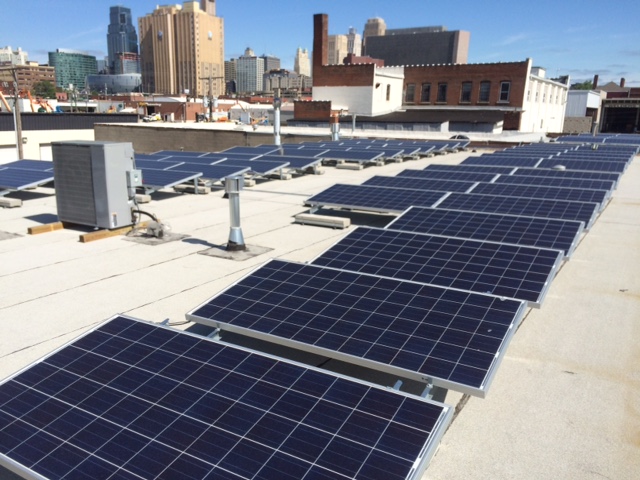Solar for Rental Properties
 Have you ever considered solar for rental properties? A lot of real estate investors love the idea of going solar. They often wonder if it is worth it on their rental properties. This has been a puzzle to me for a while, but as I’ve pondered and researched, I’ve come to the following 4 conclusions about solar and rentals.
Have you ever considered solar for rental properties? A lot of real estate investors love the idea of going solar. They often wonder if it is worth it on their rental properties. This has been a puzzle to me for a while, but as I’ve pondered and researched, I’ve come to the following 4 conclusions about solar and rentals.
1. Solar is best for landlords who pay utility costs themselves.
If you include utility costs in your expenses, rather than charging them to your tenants, solar makes perfect sense to install on your properties. As a property owner, you understand the value of leveraging and building value over time. Since buying solar is just like owning a house vs. renting one, it makes sense to add it to your property if it is something you’re investing in yourself. Alternatively, you could hypothetically raise the rent and charge more to the customer for their electricity, but that idea might take a while to catch on in our area. Some renters might not be incentivized to conserve if they have what they perceive to be unlimited free energy.
2. Solar is best on rental properties that have few electrical meters.
With utility companies in the Kansas City area, each electrical meter requires it’s own separate solar project. That means a separate permit for each meter, separate engineering, etc. This can drive up the costs of installation quite a bit. So if you’re in a situation where you own a larger building, pay the electric bill through one meter, and then charge the renters a flat rate including utilities, solar makes a lot of sense. The fewer meters, the fewer solar installations are needed.
3. Solar is best on buildings that are actually good for solar.
I do solar evaluations on buildings all day. While lots of solar marketing will say that solar will help you save money on your electric bills from day 1, it’s not always the case. There are several factors that can make or break a solar deal. First, you want to make sure there is very little or no shade on the roof of the building. One tree or chimney can have a huge effect on payback period. Next, you want the system to be a larger one, above 6kW, but over 10kW is even better. (Don’t worry. We can help you with system sizing.) There are lots of fixed costs in solar, so the bigger system you get, the cheaper the cost per watt of installation. Also, make sure the roof is not super steep and oriented to the south. Roofs with a 7/12 or lower pitch are easiest to install on. This makes for a cheaper installation. Lastly, make sure that you can borrow at a low interest rate to beat the electric inflation costs.
4. Solar is best for buildings that you will hold long term.
In the Kansas City area, the real estate market is still catching on to the idea that solar adds lots of value to buildings. To see the long term savings, you need to make sure you’re holding the property until the break even period. Being able to borrow at low interest rates is also critical for making solar a worthwhile investment. Even with some solar loans in our area, you can see a slight loss in the first few years of owning the property. If you can find a way to finance the cost of solar in with your first mortgage on the building, that is ideal. Landlords can enjoy huge depreciation tax benefits in the first 5 years on solar panel systems. (However, the new tax bill allows you to depreciate 100% of the system cost in year 1.) Thus, I would usually only consider adding solar to properties that I planned to hold for at least 5 years. The majority of savings with solar for rental properties will come in years 10-25 of the project.
Conclusion
So here’s my honest opinion. If you want to add solar to your rental property, I would shoot for a 4 out of 4 score on the criteria above. Do it on buildings that you pay utilities for, with few meters, with no shade, that you will hold for a long time. This is a way to maximize your real estate profits. As solar costs continue to decrease and electric costs rise, I believe solar for rental properties will become a more popular option.